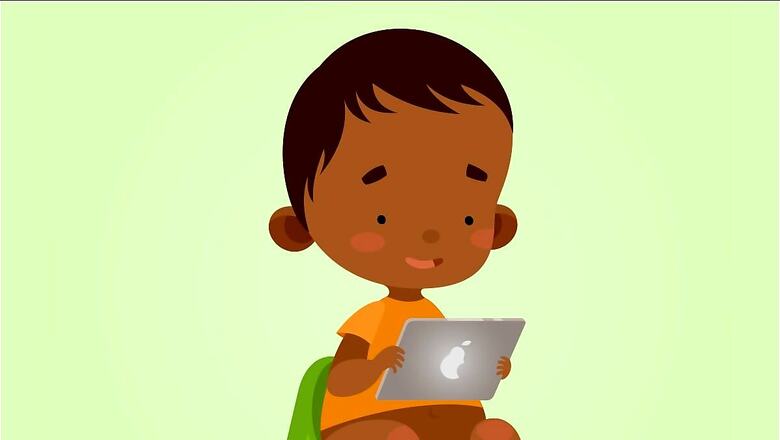
views
As children, we all remember bringing home a puppy, a kitten, a wounded bird, or any small creature that caught our fancy or tugged at our heartstrings. What we don’t remember bringing in were the millions of pathogens and microorganisms we tracked in with our shoes, our clothes and our hands, especially if we had used a public toilet. As adults looking back, we can appreciate how infinitely patient our parents were.
Children are curious and adventurous by nature. They are also tactile and gain a lot of information about the world from what they touch and pick up with their hands. It is this curiosity that can also expose them to avoidable illnesses and infections. One of the most important ways to protect children from illnesses and infections is to ensure that they practise good hygiene, especially when it comes to using the toilet.
The Role of Toilet Hygiene in Children’s Health
Toilet hygiene involves first and foremost, knowing how to properly wash your hands, how to use the toilet appropriately, how to flush it correctly, and how to keep it clean. Poor toilet hygiene can have a negative impact on children’s health, as it can expose them to harmful pathogens that can cause various diseases and infections. Since the toilet the child uses most is the one at home, the toilet hygiene habits of the entire family are important in maintaining a clean and safe toilet.
Some of the common health problems associated with an unclean toilet and poor toilet hygiene include:
- Diarrhoea: This is a condition that causes loose or watery stools, often accompanied by abdominal cramps, nausea, or vomiting. One of the main causes of diarrhoea is poor toilet hygiene, especially when children do not wash their hands properly after using the restroom or before eating. Diarrhoea can lead to dehydration, malnutrition, or weight loss if left untreated.
- Urinary tract infections (UTIs): affect the urinary system, such as the bladder, urethra, or kidneys. UTIs can cause pain, burning, or itching when urinating, fever, nausea, or blood in the urine. UTIs are more common in girls than boys, and can be prevented by wiping from front to back after using the toilet, drinking plenty of water, and avoiding holding urine for too long.
- Pinworms: These are tiny worms that live in the intestines and lay eggs around the anus. Pinworms can cause itching around the anus or vagina, especially at night. Pinworms can be spread by scratching the infected area and then touching other objects or people. Pinworms can be prevented by washing hands thoroughly after using the toilet or changing diapers, keeping fingernails short and clean, and washing bedding and clothing regularly.
- Hepatitis A: This is a viral infection that affects the liver. Hepatitis A can cause fever, fatigue, loss of appetite, nausea, vomiting, or jaundice (yellowing of the skin or eyes). Hepatitis A can be spread by contact with faecal matter from an infected person. Hepatitis A can be prevented by washing hands with soap and water after using the toilet or changing diapers, avoiding sharing food or utensils with others, and getting vaccinated.
Toilet hygiene plays a crucial role in preventing these and other infections by reducing the exposure to harmful microorganisms. By keeping the toilet area clean and sanitised, and by washing hands thoroughly after using the toilet, children can avoid many health risks and complications.
Developing Good Toilet Hygiene Habits in Children
One of the best ways is to teach them proper toilet hygiene habits from an early age. Children can start learning about toilet hygiene as soon as they are ready to use the potty or toilet. Parents and caregivers can explain to children what they need to do before, during, and after using the restroom in simple and clear terms. They can also demonstrate how to use the toilet paper correctly (wiping from front to back for girls), how to flush the toilet (using a stool if needed), and how to wash their hands with soap and water (singing a song or counting to 20).
Handwashing is another key learning. Parents and caregivers can teach children when they need to wash their hands (such as after using the toilet, before eating or preparing food), how they need to wash their hands (using warm water and soap), and why they need to wash their hands (to get rid of germs and bacteria that can make them sick). They can also make hand washing fun and rewarding by using colourful soap, stickers, or praise.
It is also important to create a positive and encouraging environment for children by providing them with the necessary tools and supplies (such as toilet paper, soap, towels, or wipes), by respecting their privacy and independence (such as knocking before entering the bathroom or letting them choose their own soap), and by praising their efforts and achievements (such as saying “good job” or “well done” or giving them a hug or a high-five).
Creating a Culture of Good Toilet Hygiene
Just as a family can’t have a clean and safe toilet if just one person practises good toilet hygiene, our schools, hospitals, workplaces, airports, movie halls and everywhere else, can’t have clean and safe toilets unless we all practise good toilet hygiene. While communicating to adults is one strategy, communicating to children at an early age yields several advantages. These good toilet hygiene habits become second nature, and, as the Sub-Group of Chief Ministers on Swachh Bharat Abhiyaan found, children can be formidable agents of change.
Harpic, India’s leading brand in the lavatory care segment, recognises the impact children can have and has directed its most thought-provoking campaigns and outreach programs towards them. Harpic has also partnered with News18 in the Mission Swachhta aur Paani Initiative, which has, for 3 years now, championed the cause of inclusive sanitation, equality for all genders, abilities, castes and classes and the strong belief that clean toilets are a shared responsibility.
Under the aegis of Mission Swachhta aur Paani, Harpic partnered with Sesame Workshop India, an educational non-profit working for the early developmental needs of young children, to promote positive sanitation, hygiene knowledge and behaviours among children and families through schools and communities, engaging with 17.5 million children across India. Mission Swachhta aur Paani also serves as a valuable repository of information on nearly every topic on toilets and sanitation. If there is a toilet and hygiene related topic you want to talk to your children about, you’ll find the resources you’ll need here.


















Comments
0 comment